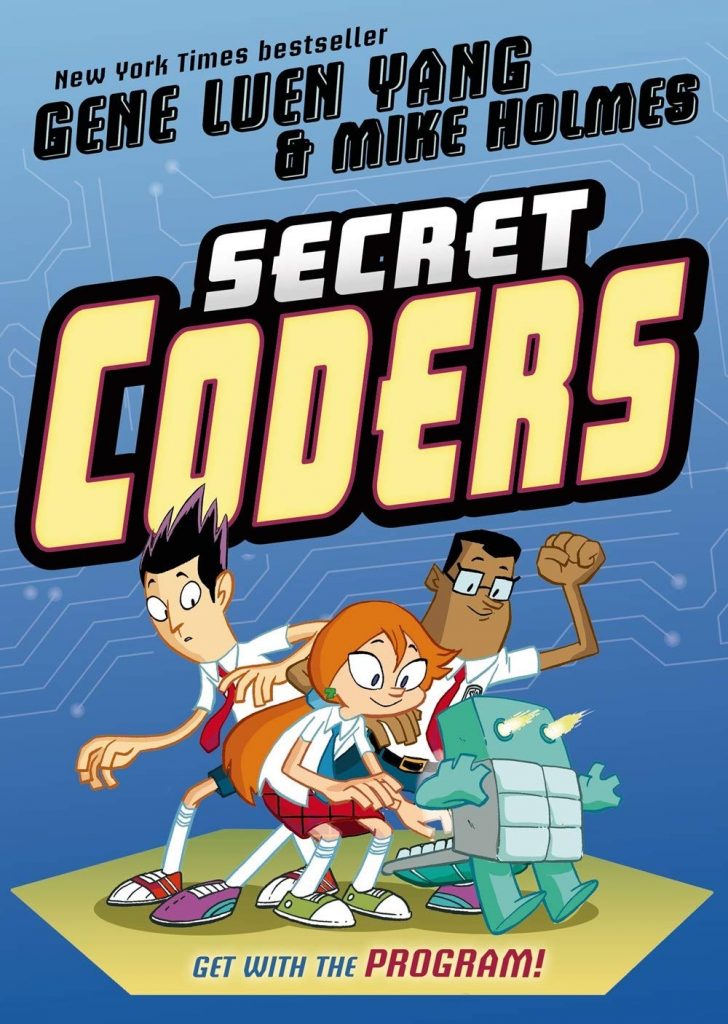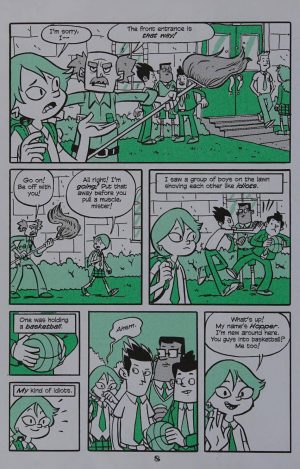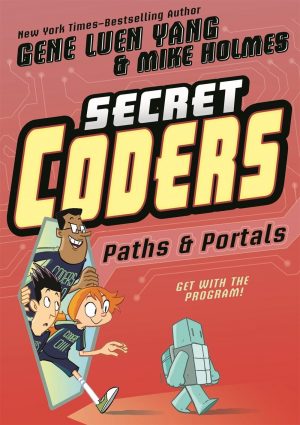Review by Frank Plowright
The name ought to be a giveaway, but it still comes as a surprise what Gene Luan Yang and Mike Holmes have sneaked past readers over the first few pages. Ostensibly they’re just showing Hopper’s first day at a new and exclusive school, along with all the traumas that brings, but once the reveal drops it turns out that those paying attention might have taken in a whole lot more. It leads into a painless explanation of binary code understanding. Once that’s been explained, the technique can be applied to solve other problems at the school such as what might be behind the heavily padlocked door the janitor zealously keeps children away from.
Despite getting off to a bad start, Hopper makes friends with Eni, not only a formidable intellect, but a big guy and basketball talent to boot, and together they begin to unravel some of the mysteries about a school that has robot birds flying around. They aren’t the only mysteries and secrets uncovered in what’s a solidly entertaining book for kids who enjoy puzzles.
Holmes’ art is really child-friendly, with large illustrations featuring largely happy people, showing everything that’s needed and coming up with visually concise ways of providing the puzzle solutions. The downside is that the solutions have to be spelled out, and for the slightly more complicated puzzles that’s a fair amount of pages used up for an explanation without moving the story forward at all.
Several elements are left hanging, one being the strange disappearance of Hopper’s basketball-loving father, and another being why Hopper is attending a new school at all. It takes six volumes to complete the Secret Coders story, and each ends on a cliffhanger puzzle that takes readers into the next. In this case it involves applying the coding process already learned to a different puzzle to reveal a new secret. All the information is there, so kids ought to be able to manage it, but if not there’ll be frustration at not learning what’s revealed until they get the next book.




